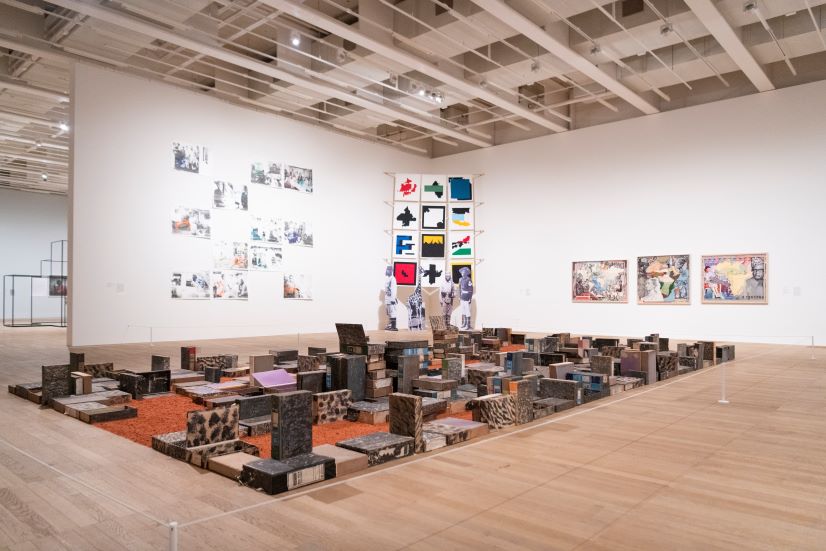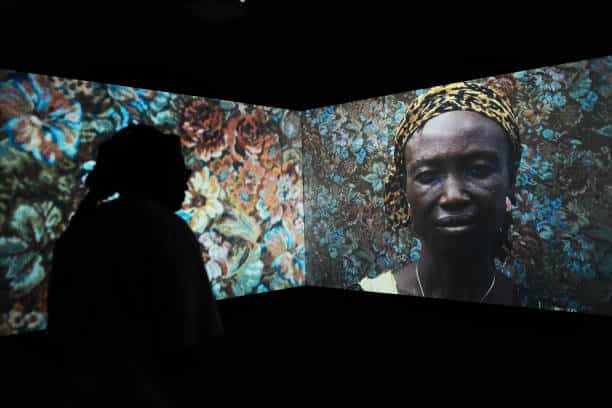
“It has to be a mark of something out there in the world,” the South Africa artist William Kentridge once remarked of the first line on a virgin canvas. Like a robust and long overdue visual interjection in the middle of a colonialized global creative economy, the African art market is now making an irresistible and indelible mark of its own. According to research firm ArtTactic, work by African artists exceeds a combined annual auction worth of $72 million (more than double its 2016 value).
“This surge in interest is a result of the convergence of different factors that have led to a thriving and dynamic African art scene, one that resonates with a global audience and challenges conventional notions,” says Elana Brundyn, Founding CEO of the Norval Foundation, and Founding Director of the Zeitz Museum of Contemporary Art Africa in Cape Town. “It’s a consistent and steadily growing interest and support for African and diasporic artists. It is not merely an art movement; it’s a cultural transformation that celebrates diversity, innovation, and identity, and a powerful force reshaping the way the world experiences all contemporary art.”
Brundyn says the exceptional body of work produced by these artists, “fearlessly delving into various aspects of identity, societal issues, and the dynamic essence of contemporary culture,” is now supported by a resilient infrastructure of African institutions and exhibition spaces, giving creators a reliable domestic platform from which to attract and expand international interest. “These institutions empower Africans to shape the narrative of Africa’s identity,” she says. “Artists are proud to exhibit their work on local soil.”
Global curiosity has also evolved into what Brundyn calls a “flourishing landscape” of art fairs dedicated to African art: 1-54 (London, New York and Marrakech), the Also Known As Africa exhibition (Paris), and the Investec Cape Town Art Fair feed a thriving network of secondary art markets, such as Sotheby’s Modern & Contemporary African Art Auction.

This demand is stimulated at ground level by viral excitement generated by social media, to the point where the traditional hierarchy of commodification is starting to dissolve. Awareness now drives audience appetite, rather than just accessibility. Africa-born artists are consistently featured or their works permanently exhibited in some of the world’s most influential galleries: one third of the 62 international exhibitors at this year’s 1-54 Contemporary African Art Fair at Somerset House in London were from the African continent. The White Cube gallery houses a collection by South African figurative painter Cinga Samson; the work of Nigerian photo-tapestry powerhouse Njideka Akunyili Crosby can be enjoyed in many of the most important galleries on both sides of the Atlantic, including the Metropolitan Museum of Art in New York and the Tate Modern in London.
Osei Bonsu, a curator at the Tate Modern and author of African Art Now: Fifty Pioneers Defining African Art for the Twenty-First Century,says his museum has embraced the demand for greater equitability and inclusivity. “Tate Modern is uniquely positioned in a growing landscape of institutions seeking to highlight art from Africa and its global diaspora,” he says. “The Africa Acquisitions Committee was founded in 2011 specifically to broaden the representation of such artists. The recent success of exhibitions such as El Anatsui’s Turbine Hall commission, and A World in Common: Contemporary African Photography, suggests that public interest is growing, as museums are seeking to address a broader and more inclusive vision of art history and contemporary culture.”
He points out that these are positive first steps; the global art market is worth close to $68 billion, dwarfing an African component with a long journey ahead before it reaches numbers that more equitably voice the ideas and creativity of a fifth of the world’s population. “We still need to see more sustained representation of African art through dedicated publications and monographic exhibitions,” he says. “But I’m hopeful museums like Tate will continue to play a leading role in connecting African art with local and international audiences.”
Dr Tenley Bick, Assistant Professor of Global Modern and Contemporary Art at Florida State University, says that global audience interest in these artworks is fuelled by a deep desire for recognition and discussion of the socio-political issues that inspire their creation.
“Those attuned to African arts and the global art world may have noticed two events in recent weeks: Art X, the fair of contemporary African art in Lagos, and Africa & Byzantium at the Metropolitan Museum of Art in New York, an exhibition that also includes works by contemporary African artists,” Bick says. “Major museums, commercial galleries, and biennials in the US and Europe – where the ‘global’ art market is often dictated – are reckoning with systemic racism, resulting in changes in programming, acquisitions, and rosters, often with increased attention to the arts of Africa and its diasporas.”
She notes that these incremental but significant gains are the result of the cultural work invested over several decades. “They are long-fought and hard-won – by artist-activists like the Black Emergency Cultural Coalition in the US of the 1970s and the British Black Arts movement in the 1980s. And by important curators from the continent such as Salah Hassan (editor of the Nka Journal of Contemporary African Art), Smithsonian Institute senior fellow Olu Oguibe, and the late art critics and curators Okwui Enwezor and Bisi Silva.”
Brundyn believes that a buoyant global network, and an overlap of interest, demand and education, are creating a burgeoning market with the tenacity to outlast its relative novelty.
“The growing diversification of collections is increasingly evident as more individuals and institutions incorporate African artworks alongside other genres,” she says. “Academic and research institutions are dedicating more resources to studying and documenting art from Africa. This has led to a deeper understanding of the cultural, historical, and artistic significance of these artworks, and a renaissance that has facilitated greater cultural exchange between Africa and the rest of the world.”